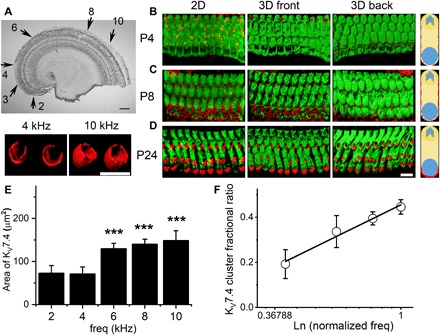Fig. 1. Kv7.4 clusters increased in OHCs along the frequency-place map of the mammalian cochlear.

(A) Representative segment of the mouse cochlea, showing the approximate frequency-place map from apical to basal contour (arrows). The black arrows indicate the predicted labeled sound frequencies (in kilohertz), represented on the cochlear map. Scale bar, 100 μm. (B to D) The expression pattern of Kv7.4 channels in OHCs from P4 (B), P8 (C), and P24 (D), respectively. Scale bar in (D) [representing (B) to (D)], 10 μm. The left panel represents two-dimensional (2D) confocal sections. Hair cells were labeled with myosin 7A antibody (Alexa Fluor 488 or fluorescein isothiocyanate in green) and Kv7.4 antibody (Alexa Fluor 555 in red). The middle and right panels show a 3D rendition of Z-stack images representing the front and back of the images, respectively, to locate Kv7.4 expression. Shown in the right panel are schematic representations summarizing channel expression during development. (E) By P24, when there are defined Kv7.4 clusters at the basolateral region of OHCs across the frequency-place map of the cochlea, semiquantitative analysis of the surface area of clusters was performed using the Imaris software routine and plotted against the apparent location and frequency representation of OHCs. The inset (above) shows examples of Kv7.4 clusters used to measure the areas shown in the bar graph. Scale bar, 4 μm. Data were generated from 50 OHCs from each frequency location and averaged from 12 different cochleae. Data were compared to OHCs at the apical tip of the cochlea (2 kHz) (***P < 0.001). (F) Kv7.4 fractional ratio was estimated as the area of Kv7.4 cluster/OHC surface area. The relation between the Kv7.4 cluster ratio along the frequency-place map of the cochlea was best described with a natural logarithmic function of the normalized frequency, from 2 to 10 kHz, where 10 kHz was set as 1. The data represent a onefold increase in channel fractional cluster ratio per octave.
